- Call us: 01444 237070
- Contact Us
- Stores
- Sign In / Register
-
- Back
- Used Cameras
- Used Lenses
- Used Video
- Used Film Equipment
- Used Stock Alert
- Used Accessories
- Recently Added Used Equipment
- Used Clearance
- Faulty
- Park Picks
- Sell or Part Exchange
- Trade-In
- Blog
- New in
- Call us
- Contact us
- Stores
- Sign in
- Categories
- Tips & Inspiration
- Reviews
- News
- Events
- Features
- Buying Guides
- Competitions
Nikon Z 85mm f/1.2 S Lens Review
During my Nikon ZF review I had the chance to shoot with Nikon's premium Z 85mm f/1.2 S Lens. Unfortunately due to illness, I couldn't focus on portrait photography as planned, and instead spent time capturing family moments and local scenery.
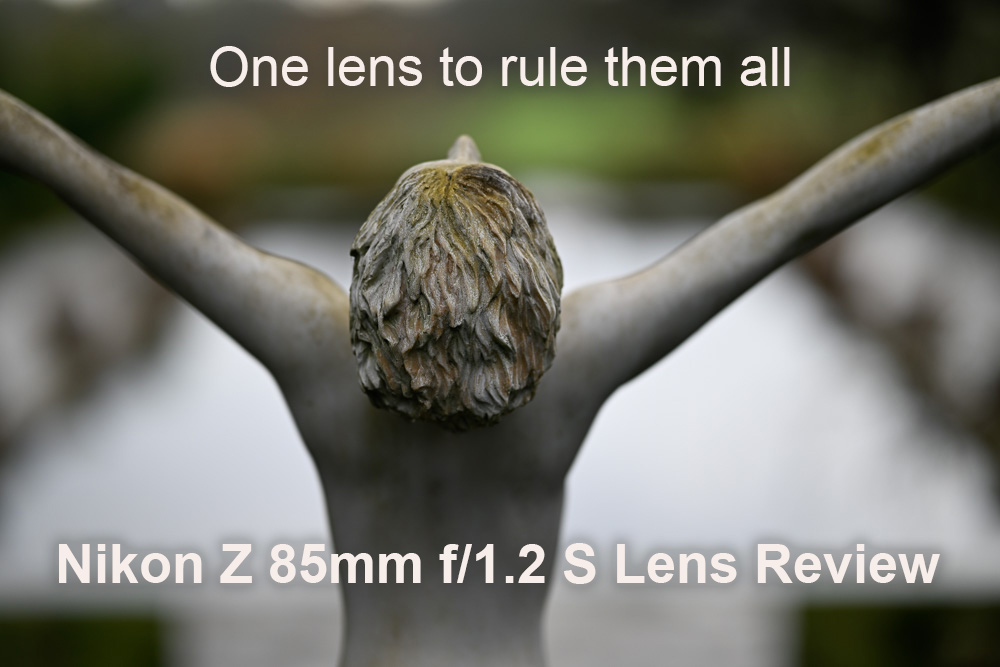
Camera settings: Exposure 1/2000 sec. f/1.2. ISO 100
Being a nature photographer, an 85mm prime lens hasn't been a high priority for me. Nevertheless, this particular Nikon mirrorless lens combines an extremely fast maximum aperture with cutting-edge Nikkor Z optics, which I relished to try across a variety of everyday situations.
Did it deliver? Find out in our Nikon Z 85mm f/1.2 S Lens review, which has plenty of sample images, 100% crops and more in order to help you to decide whether this is the perfect short telephoto lens for your needs.
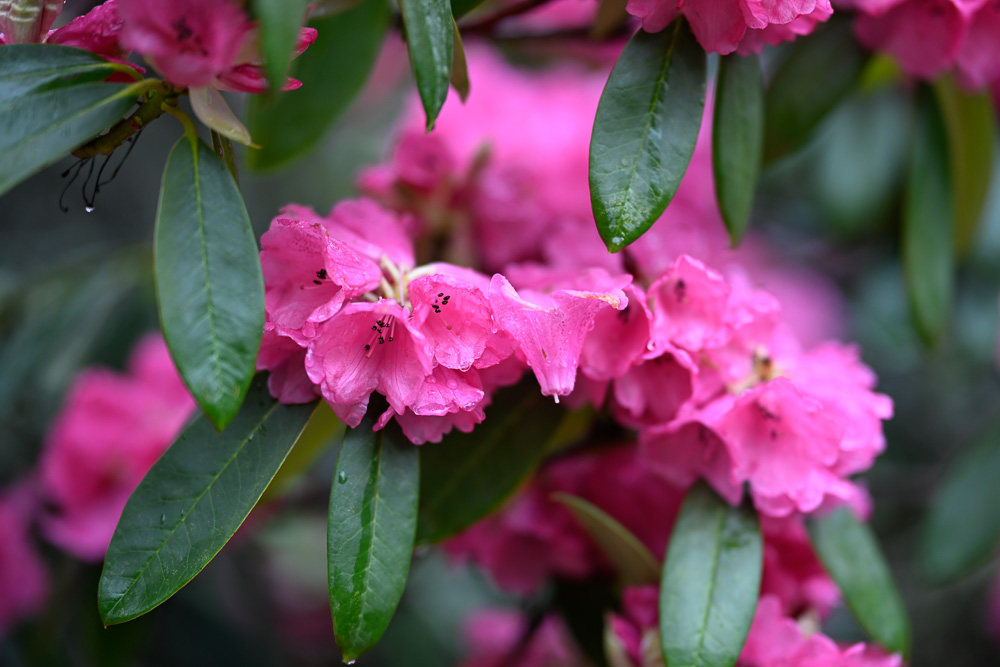
Camera settings: Exposure 1/250 sec. f/1.3. ISO 200
Sample images
For this review I shot with combined RAW+JPG in manual mode with Auto ISO, and all of the Nikon Z 85mm f/1.2 S sample images are unedited straight out of camera. I absolutely love the colours which are rendered by Nikon mirrorless cameras and would happily choose JPG over RAW in many instances to keep editing to a minimum.
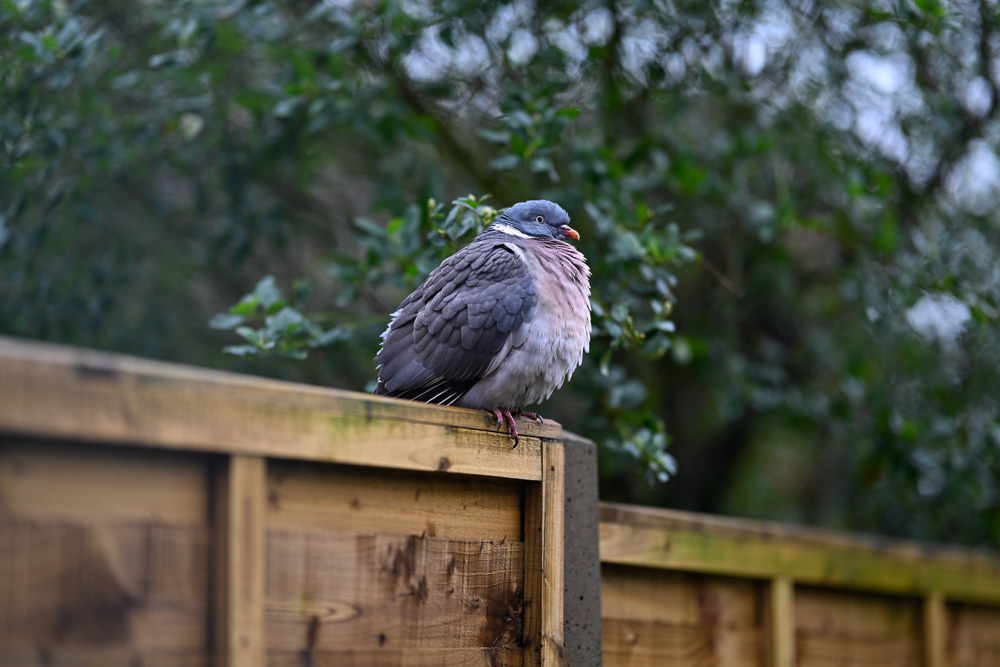
Camera settings: Exposure 1/500 sec. f/1.2. ISO 110
Nikon Z 85mm f/1.2 S lens price
The Nikon Z 85mm f/1.2 S lens is priced at £2,999.00, positioning it at the premium end of Nikon's mirrorless lens range. It's specifically targeted at professional users and enthusiastic creators who require the highest image quality for their stills and videography.
Although the Z 85mm f/1.2 S Lens is exceptional, it's not the only 85mm mirrorless option from Nikon. The Z 85mm f/1.8 S Lens is a great alternative, and is available for under £800.00, however the Z 85mm f/1.2 offers a host of professional features, which justify its price. Find out what these are below in the lens’ highlights.
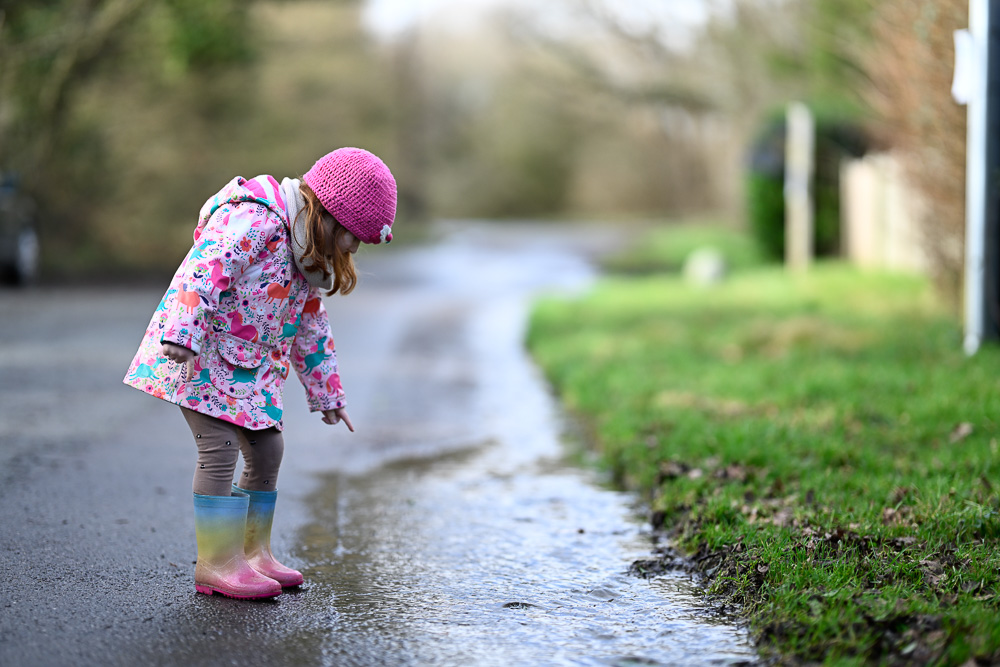
Camera settings: Exposure 1/4000 sec. f/1.2. ISO 250
Nikon Z 85mm 1.2 highlights
As a premium S-Line lens users can expect the very best performance from this full-frame prime, with advanced optics, comprehensive weather sealing, high build quality and excellent useability. It does indeed deliver on all of these characteristics through:
- A razor-thin focal plane with f/1.2 aperture
- 11 rounded diaphragm blades
- Optical design with 1 ED element and 2 aspherical elements
- Dual STM focus motors
- Full-time manual focus override
- 0.85m minimum focus distance with 0.11x magnification
- Nano Crystal Coat
- 82mm lens filter thread
- Extensive weather sealing
Whether you shoot indoors or outside on location you can expect impeccable results regardless of environmental conditions with this lens.

Camera settings: Exposure 1/250 sec. f/1.2. ISO 160
What is an 85mm lens good for?
Traditionally an 85mm lens is used for portrait photography, where the fast aperture and short telephoto focal width combine to render a pin sharp subject with beautifully soft backgrounds. However an 85mm lens can be used for many more genres, which includes:
- Street photography
- Weddings
- Closer wildlife subjects
- Pet photography
- Sports
- Detail shots
- Food photography
- Landscape and travel
- General purpose
- Videography
It is of course worth considering the difference between a prime vs a zoom lens, however at this focal length many photographers might prioritise a fast maximum aperture and image quality over the versatility of a zoom.

Camera settings: Exposure 1/1000 sec. f/1.2. ISO 100
What’s so good about the Nikon Z 85mm f/1.2 lens?
The Nikon Z 85mm f/1.2 boasts an ultra-fast aperture with an 11-bladed diaphragm. Combined with its special glass elements, these enable results with a very shallow depth of field, superior light gathering in low-light conditions, and the creation of beautifully rounded bokeh.
These are among the most desirable qualities that a short telephoto lens can provide, especially when capturing subject-driven photography, which benefits from subject separation and shallow depth of field.
While shooting in Auto ISO, I was repeatedly surprised at how low the ISO was able to remain, even in extremely dim situations. If you often find yourself shooting in low light, there’s no better option for your photography than the Nikon Z 85mm 1.2.
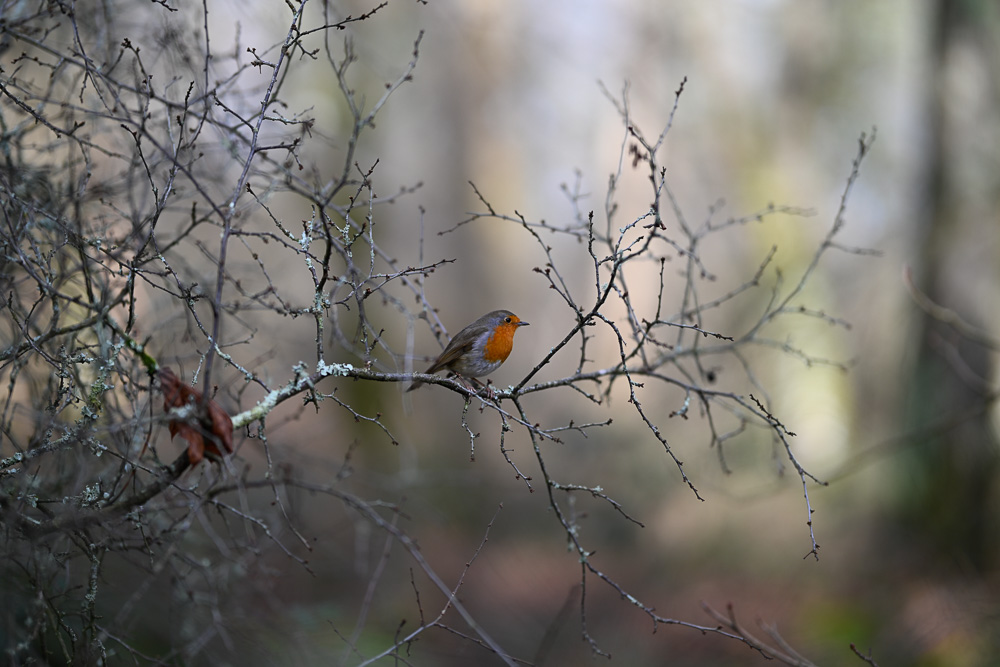
Camera settings: Exposure 1/2000 sec. f/1.2. ISO 100
Image quality
Image quality is likely a top priority for anyone considering this lens. My experience showed that it excels in this arena, elevating ordinary shots with a shallower depth of field and stunning subject separation. The transition from sharp to out-of-focus areas is equally impressive, with natural falloff and smooth graduations.
Achieving silky smooth defocus areas in the image is far easier than with lenses, which offer a narrower aperture, with the maximum f/1.2 being noticeably brighter than an f/1.8 or f/2.8 lens. Subjects often pop out of the frame, especially where the light modelled the subject against the background, making it fun to work with wide open in almost any situation. I personally love the dreamy defocus quality which a shallow depth of field can render, and appreciate images with an esoteric quality, which defocus provides.

100% crop from the previous robin image
You can expect very high centre sharpness right from f/1.2, with corners showing equally sharp, high contrast results from around f/2.0. The lens effortlessly rendered detailed results from the Nikon Zf’s 24 megapixel sensor and every image showed good contrast, natural colours, and exquisite detail, regardless of the shallow depth of field.
The inclusion of Nikon's anti-reflective Nano Crystal Coat also contributes to high image quality, by controlling light dispersion and effectively preventing ghosting, reflections, and flare.
If you need the best possible image quality, the Nikon Z 85mm f/1.2 S will not disappoint.

Camera settings: Exposure 1/2000 sec. f/1.3. ISO 320
Autofocus
The autofocus (AF) performance of the Z 85mm f/1.2 S lens is impressively quick, thanks to its dual focus motor technology. This allows for effective tracking and maintaining sharp focus on both stationary and moving subjects, even when shooting at wide-open at f/1.2.
Additionally, AF operates extremely quietly, with no discernible motor sounds. This silent AF, coupled with well-managed focus breathing, makes the lens an excellent choice for video recording. It's particularly suitable for filmmakers seeking to capture videos with a shallow depth of field, while relying on the lens's robust moviemaking capabilities for confident results.
Nikon’s multi-focusing system drives two groups of lens elements, which not only delivers fast and accurate autofocus, but helps to reduce aberrations and colour fringing. It’s an all-round technical marvel, designed solely to deliver premium results.

Lens ergonomics and usability
At this price point users will expect the ultimate in build and handling, which the 85mm NikonZ lens once again delivers with aplomb. In fact it over-delivers with a hefty 1160g weight and large proportions, confirming that this is not a lens for the faint-hearted.
Perhaps in part due to its size and weight, the f/1.2 S lens feels incredibly robust, sturdy and durable. It’s not too heavy to handhold by any means, but does demand that you pay attention to your technique, especially as there’s no lens-based image stabilisation, which is handled by the camera body.
For this review I was using the Nikon Zf. The smaller camera body could be considered slightly too compact for the Nikon Z 85mm f/1.2, which may be better suited to larger-gripped models like the Nikon Z9, or the regularly sized Z8 and other cameras in the range. Despite its size it was comfortable in the hand, easy to operate and felt robust throughout the review.

Nikon Z 85mm compared to the Nikon Z 26mm lens
Where does the Z 85mm f/1.2 sit within the lineup?
The Z 85mm f/1.2 S lens is one of a handful of short telephoto prime lenses within a lineup of over 40 native Z mount lenses. These include the aforementioned 85mm f/1.8, and of course there is the award winning Z 58mm F/0.95 S Noct Lens, which is the holy grail of wide aperture prime lenses.
The Nikon Z 135mm F/1.8 S Plena Lens is another example demonstrating Nikon’s optical prowess, which delivers impeccable results at a longer focal width. There’s no shortage of premium prime lenses, which caters to professional users who have adopted the Z system.
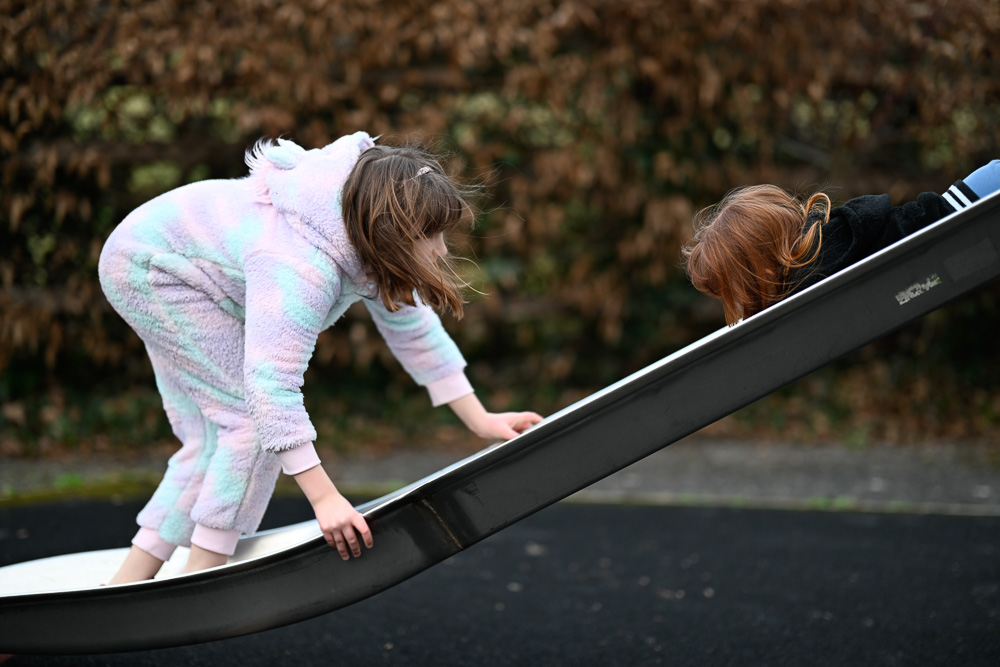
Camera settings: Exposure 1/500 sec. f/1.2. ISO 140
Which is better for portraits, 50mm or 85mm?
There’s no one answer as to whether a 50mm or 85mm is better for portraits, instead coming down to personal preference and style of shooting. An 85mm lens will give a tighter, more compressed result, whereas 50mm offers a wider field of view for more environmental elements in the frame.
You can stand closer to your subject with a 50mm lens, while those shooting with an 85mm will be standing slightly further back in order to avoid cropping too much of the subject. The closest ally in Nikon’s stable is the Nikon Z 50mm F/1.2 S Lens, which is a worthy alternative or accompanying option to the 85mm f/1.2 s. Ideally you should try both before deciding between them, which you can do at one of Park Cameras stores in London or Sussex.
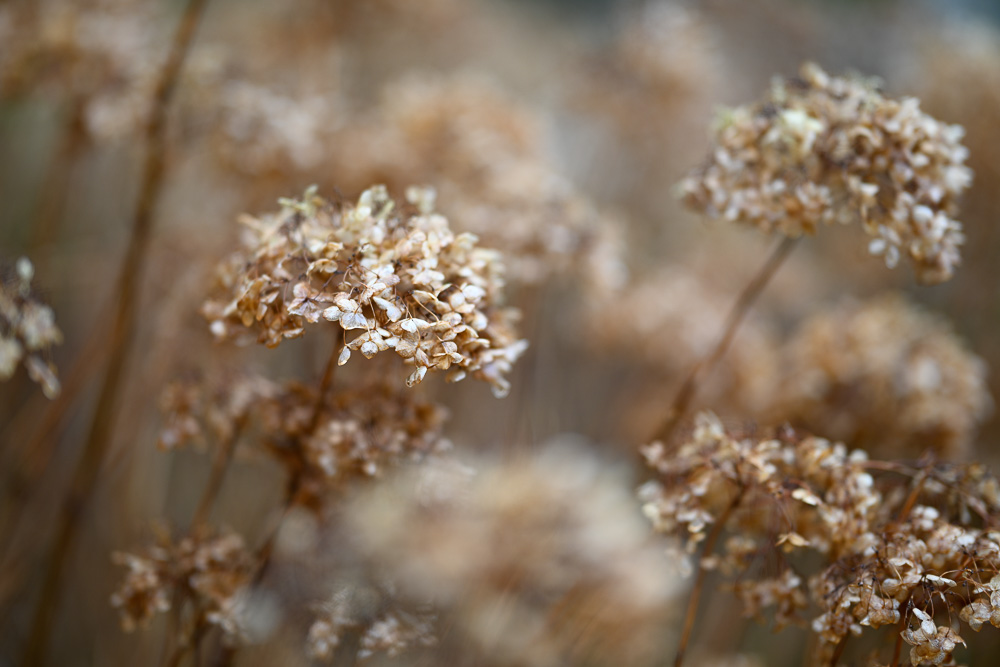
Camera settings: Exposure 1/500 sec. f/1.2. ISO 100
Accessories
Any 82mm threaded lens filter can be used with the Z 85mm f/1.2 S lens, and some users will opt for a lens protector or UV filter to reduce the chances of accidental damage to the front element. The current generation Hoya 82mm HD NANO II UV Filter is an extremely strong thin-framed option, while the Hoya 82mm Fusion One Next UV Filter offers similar protection at half the cost.
A CPL such as the Hoya 82mm HD II Circular Polarising Filter is ideal for outdoor photography, whereas the PolarPro Peter Mckinnon VND Edition II 82mm 2/5 Stop filter is an essential tool for outdoor video recording in bright conditions.
Lastly you could supplement the included lens case with 3 Legged Thing’s newest release – a Swirls Wrapz Large, which will not only protect the lens in your bag, but do so in imitation 70’s glory.
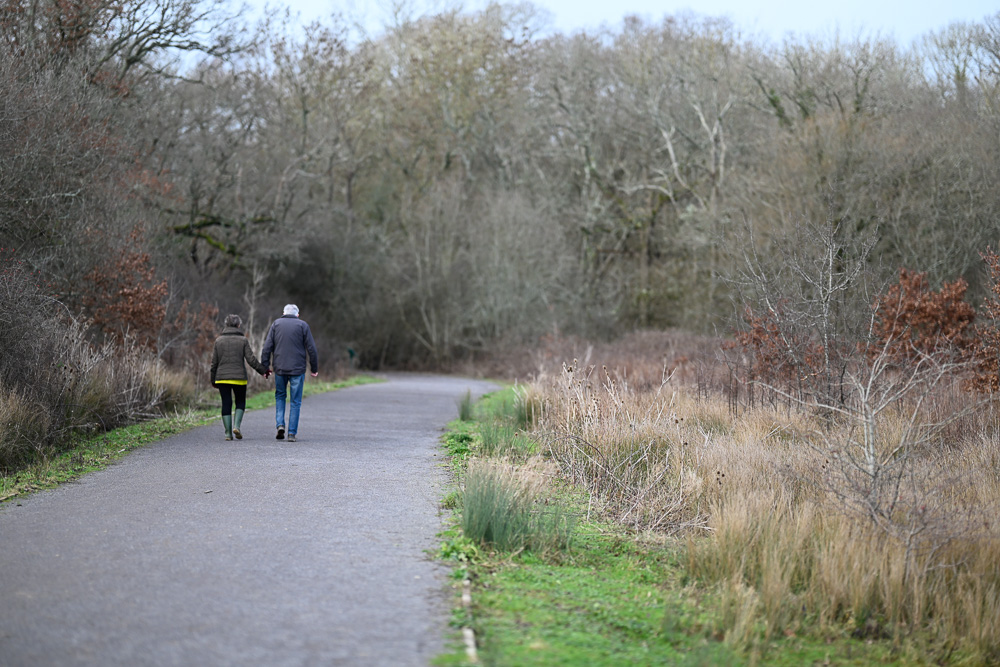
Camera settings: Exposure 1/4000 sec. f/1.2. ISO 200
Anyone who invests in the Nikon Z 85mm lens can expect to achieve soft backgrounds, seamless transitions, and crisp details, along with minimal aberrations and sharp details throughout the frame.
It’s a lens which surpasses any expectations, delivering surprisingly quick AF, to-die-for shallow depth of field and premium results at any aperture. There are naturally some considerations aside from the price, such as the size and weight of the lens, which is the heaviest of any prime I have used.
Would I buy one? In a heartbeat yes. I’ve never enjoyed an 85mm lens quite as much and could imagine this being permanently attached to my camera body for virtually any occasion. If you have the means, this lens comes very highly recommended and would make the ideal companion for professional portraiture, weddings and a number of other genres.
Reserve your Nikon Z 85mm f/1.2 S lens today and harness a range of professional features to impress your clients and elevate your photography.
If you’re considering upgrading to this lens, why not grab a free quotation and trade-in unwanted camera equipment and enjoy Park Camera’s stress-free upgrade experience.
Share this post:
By Nick Dautlich on 12/02/2024

Trade in your old equipment
Fast and easy trade in service ensures your old gear is collected efficiently and you are paid quickly! It's very simple to trade in your unwanted photography gear. Just head over to our dedicated Sell or Part Exchange page, fill out the details, and we'll get back to you with an offer for your old gear. Take the cash, or put it towards the cost of your new gear. It's up to you! Find out more
sign up to the newsletter
Keep up to date on the latest photography news, events and offers. Sign up now
